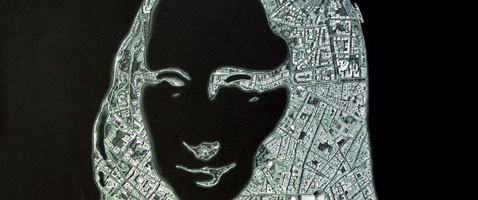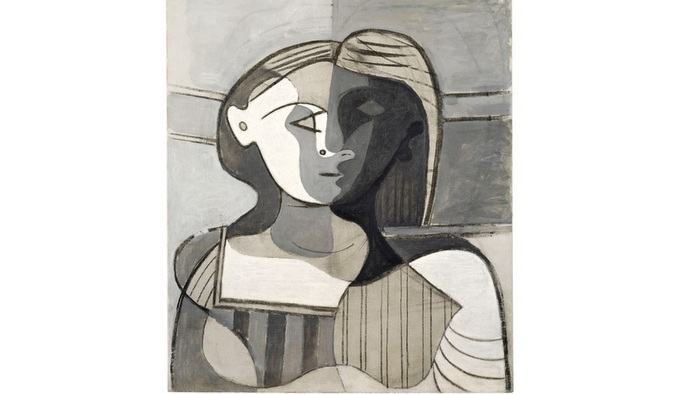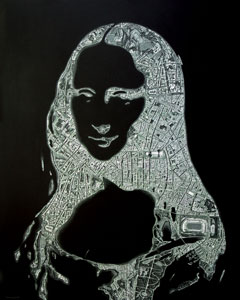
By Caridad Blanco de la Cruz
Sporting its monochromatic tones, as if it were all about photographs, Reyneiro Tamayo’s recent work plays out the landscapes and leads them into fiction. The artist has come to give spectators baffling images in which he lampoons the Earth’s geometry in his studio. With these pictures he pieces together a narrative context that walks away from the scientific interpretation of geography for the sake of the humanism woven into bodies, one of those metaphors of his related to art, history and many other current issues, incarnated in mythic and warmongering silhouettes disguised in peninsulas, cities, bays, beaches or islands, and starred by segments of his Satellite Eye series.
 These fantasies and their tremendous visual impacts, created by Tamayo and culled as part of this Promised Land exhibit, turn out to be some kind of puzzling sentence and particular warning about the many tribulations faced by the contemporary world. By means of this formal rewriting of the pop art ingrained in his work and based, above all, on the paradoxical appropriation of a language as common as Google Earth’s, the artist recreates that global visual culture we are all a part of as he mulls over universal topics by recycling outreaching codes he manages to efficiently put his ideas across with.
These fantasies and their tremendous visual impacts, created by Tamayo and culled as part of this Promised Land exhibit, turn out to be some kind of puzzling sentence and particular warning about the many tribulations faced by the contemporary world. By means of this formal rewriting of the pop art ingrained in his work and based, above all, on the paradoxical appropriation of a language as common as Google Earth’s, the artist recreates that global visual culture we are all a part of as he mulls over universal topics by recycling outreaching codes he manages to efficiently put his ideas across with.
For his fabled stories, Tamayo relies on thoughts forged in keeping with the enhancement of the information consumer area of mankind. He never hides his fascination in that sense, nor his preference for the surprising imagery resulting from it. However, his critical look goes beyond that and strips us all over in a subtle and sententious way, of man’s gripping dependence on his PC. He’s afraid of that surrogate reality the individual feeds on by himself. He’s fearful of the shipwrecked people we are –as defined by Stefania Mosca- in the choppy seas of information.
We are presented with a new dimension (in senses) of those criteria contained in: Laguna interior, Mito y realidad, El último día de Jackson Pollock, Habana, Bombardero, Playa and Harakiri. All that much in bodies carved in montages and collages, in hybrids whose ruses ooze out unexpectedly into irony. The panorama that Reynerio Tamayo delivers (re)creates just a few impressions of this world. Versions and nothing else. Mirages, virtual scenes. It’s mandatory to know that for the moment when, from above, someone thinks he or she can dominate everything. He or she should stop believing to be God’s eyes.
Related Publications
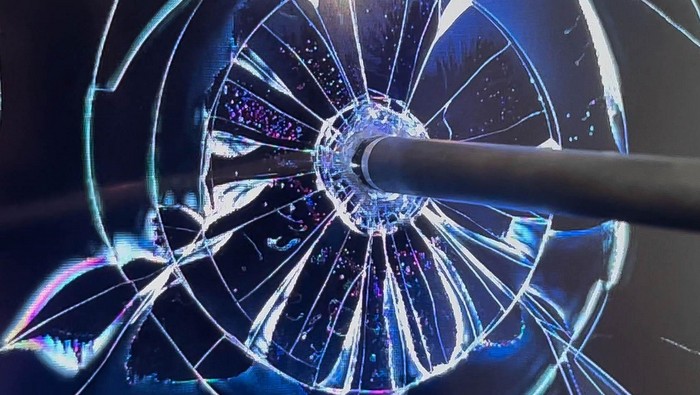
Leo Pum presents HYPER LIKE at HYPER HOUSE
December 18, 2025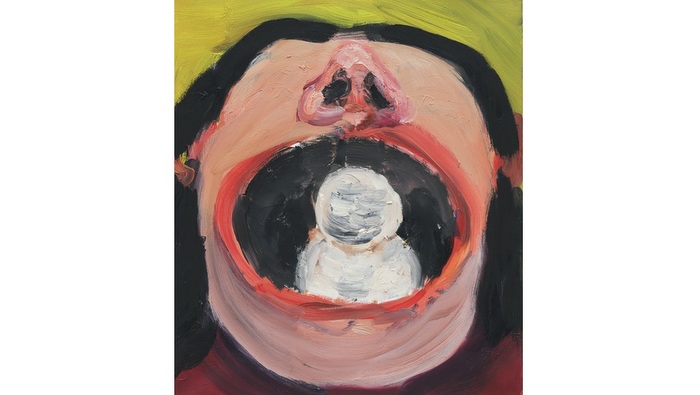
Aargauer Kunsthaus. Klodin Erb. Curtain falls dog calls
December 17, 2025

